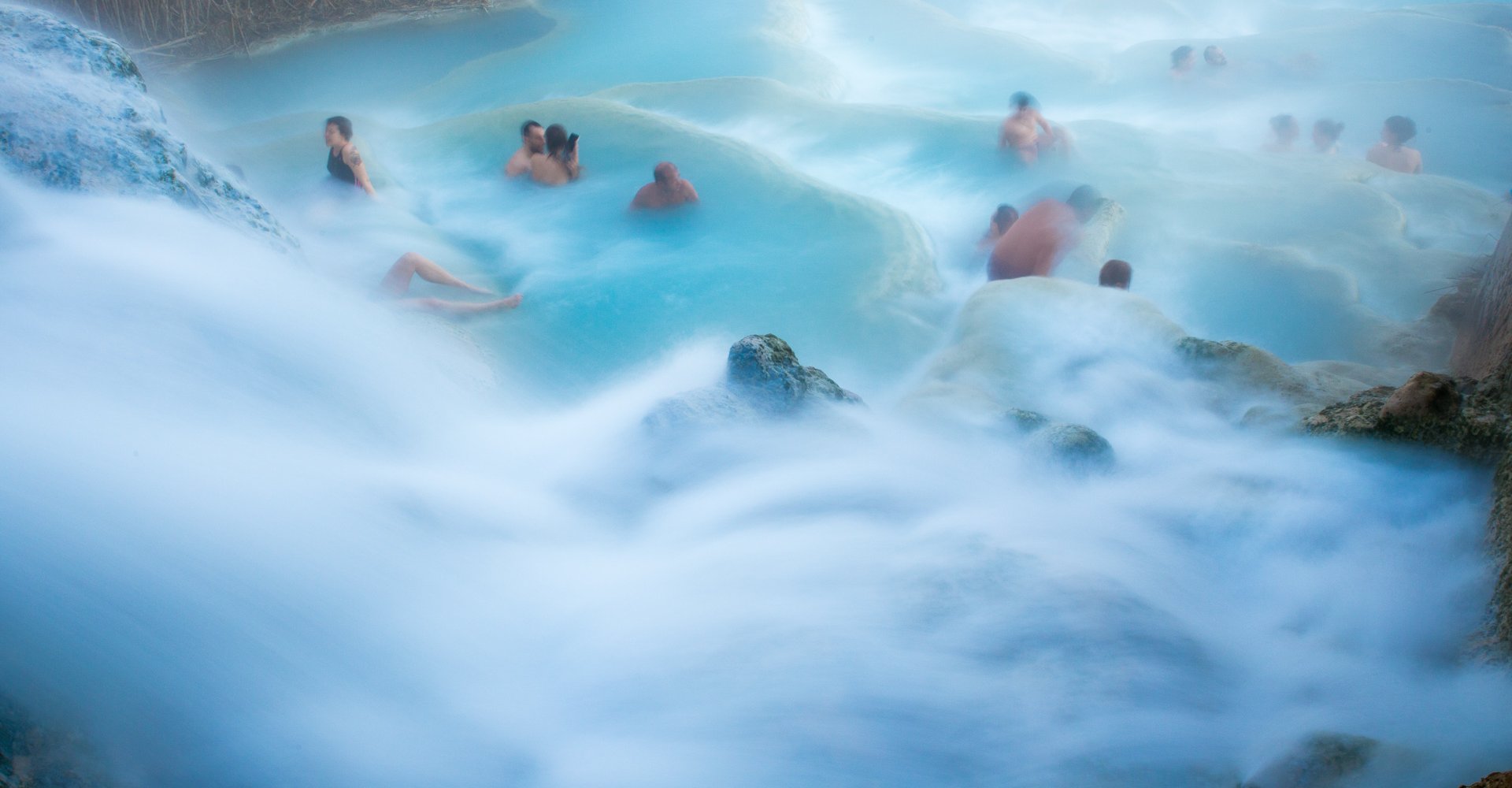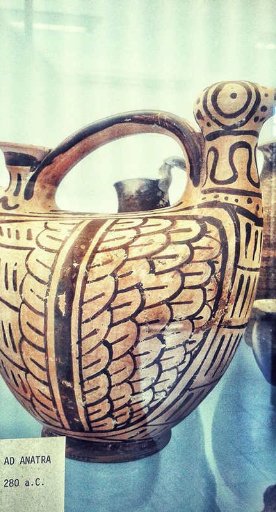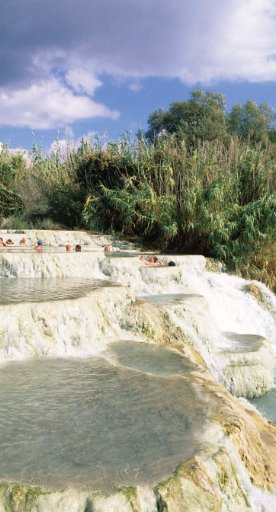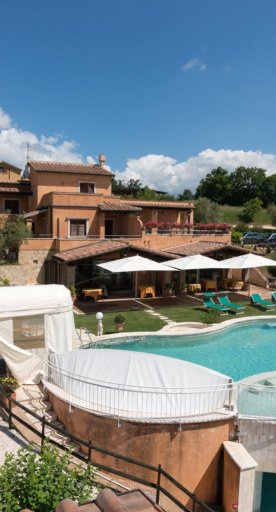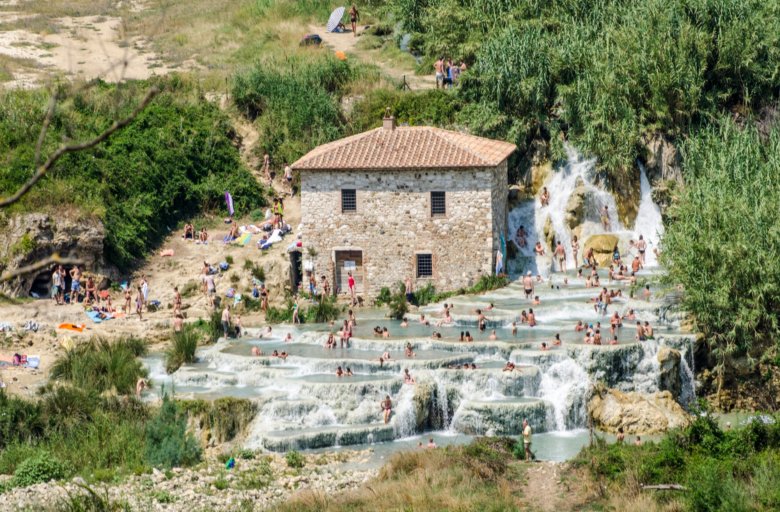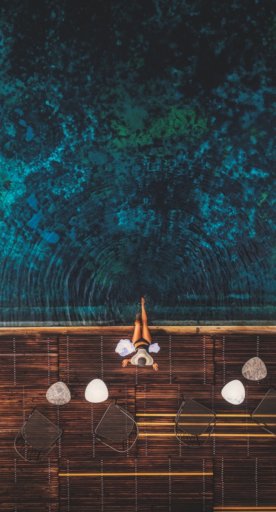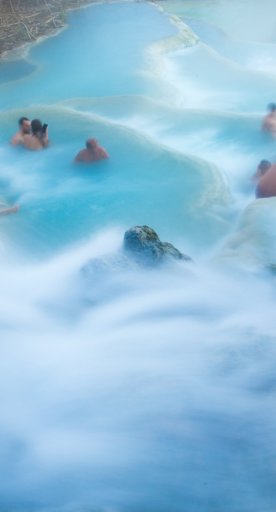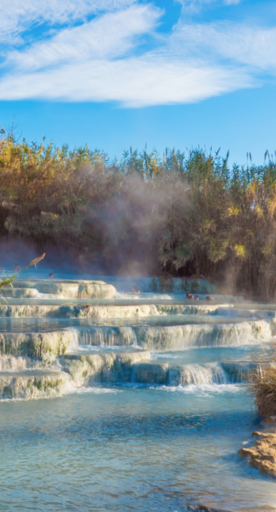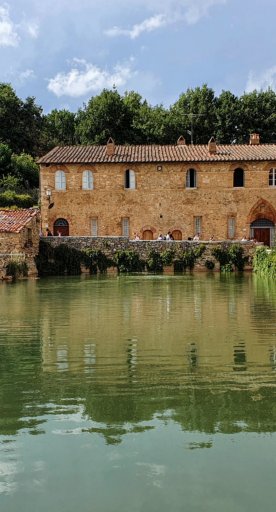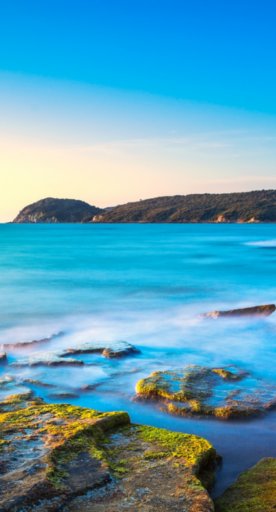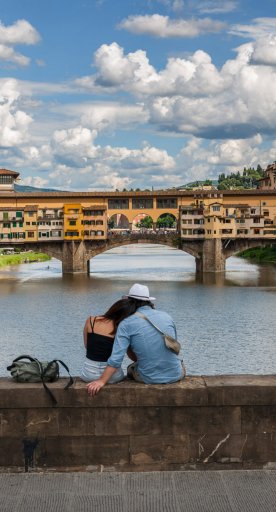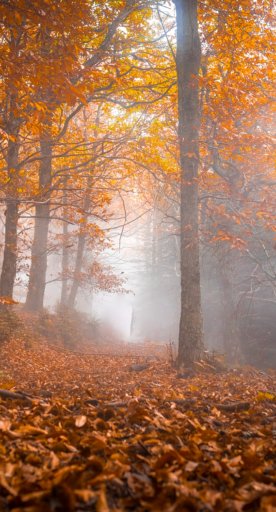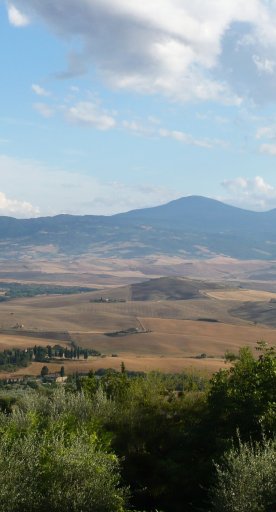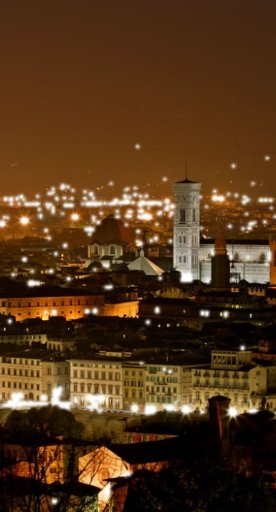Saturnia
The famous hot springs in the heart of the Maremma
The legend goes that Saturn, out of anger with a mankind that was constantly at war with itself, took a thunderbolt and flung it to earth. Thus he created a volcanic crater that gushed forth not lava but hot, sulphurous water. From this welcoming fold men emerged happier and wiser.
The scene of that legend is right in the heart of the Tuscan Maremma, at Saturnia, where 800 litres of water surface every second, at a temperature of 37°C, drawing visitors from all over the world with its curious, sulphurous smells.
Saturnia, supposedly the oldest town in Italy, has a long and tangled history. The area has been inhabited since the time of the Etruscans, who called it Aurinia; it was the Romans were later renamed it Saturnia. During the medieval period it weathered numerous assaults from Orvieto and Siena, and the fortifications that the local feudal lords had built eventually proved powerless to prevent this part of the Maremma from being conquered. The marshes that the Etruscans and the Romans had so tirelessly drained seeped back in again. Only in 1828 did Duke Leopold II reinvigorate the land reclamation programme, and Saturnia started to welcome back a local population.
What to see at Saturnia
Saturnia stands on the summit of a hill, looking over the famous springs. This unique and bustling Tuscan town stands near the remains of an Etruscan necropolis on the Roman Via Clodia, known also as the Via delle Terme, between the Via Cassia and the Via Aurelia. Not much remains to be seen or visited of the ancient settlement; of the old walls, dating back to the fourth and third centuries BC, we can still see the Porta Romana and an ancient bathhouse, which comprises a square, Roman-era pool next to the church of the Maddalena.
You can visit the Saturnia Archaeological Museum and see the finds unearthed in the local area. They date from prehistory up to the Roman period.
The Cascate del Mulino are a series of thunderously impressive waterfalls, where the thermal waters have worn away the rocks into a staircase of little pools. These are free to access and extraordinary good for photos. The Saturnia springs, however, don't stop here: there are two dedicated spa resorts in the form of Terme di Saturnia Spa & Golf Resort and the Terme Fonte Pura.
Saturnia stands on the summit of a hill, looking over the famous springs. This unique and bustling Tuscan town stands near the remains of an Etruscan necropolis on the Roman Via Clodia, known also as the Via delle Terme, between the Via Cassia and the Via Aurelia. Not much remains to be seen or visited of the ancient settlement; of the old walls, dating back to the fourth and third centuries BC, we can still see the Porta Romana and an ancient bathhouse, which comprises a square, Roman-era pool next to the church of the Maddalena.
You can visit the Saturnia Archaeological Museum and see the finds unearthed in the local area. They date from prehistory up to the Roman period.
The Cascate del Mulino are a series of thunderously impressive waterfalls, where the thermal waters have worn away the rocks into a staircase of little pools. These are free to access and extraordinary good for photos. The Saturnia springs, however, don't stop here: there are two dedicated spa resorts in the form of Terme di Saturnia Spa & Golf Resort and the Terme Fonte Pura.
Nearby
Southern Tuscany is truly incredible: far from the bustle of the tourist centres, the countryside is free to present its unique landscapes as it chooses, and life follows a decidedly slower rhythm.
With its magnificent hot springs, hilltowns and many picnic areas, the Maremma really is the perfect place for a romantic holiday weekend.
Southern Tuscany is truly incredible: far from the bustle of the tourist centres, the countryside is free to present its unique landscapes as it chooses, and life follows a decidedly slower rhythm.
With its magnificent hot springs, hilltowns and many picnic areas, the Maremma really is the perfect place for a romantic holiday weekend.
Local Produce
The Maremma countryside is more than a treasure trove of places to visit, but also of products to discover and taste in accordance with the rhythms of the season. The fruits of this area have been known for millennia, and even the Etruscans here were venerating the olive oil, chestnuts, wine, thick honey, cheeses and fruits that it gave them.
The Maremma countryside is more than a treasure trove of places to visit, but also of products to discover and taste in accordance with the rhythms of the season. The fruits of this area have been known for millennia, and even the Etruscans here were venerating the olive oil, chestnuts, wine, thick honey, cheeses and fruits that it gave them.
